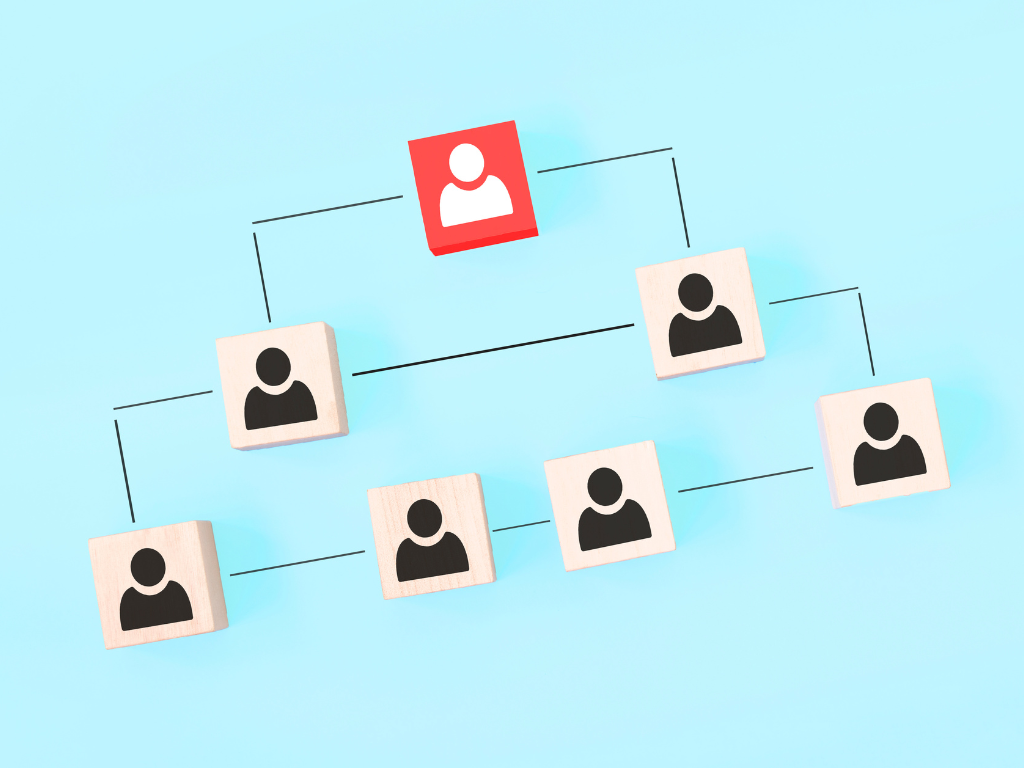A fundraising team is the backbone of any successful nonprofit campaign.
Without a strong team of dedicated people, it’s nearly impossible to reach your fundraising goals and make a meaningful impact in your community.
However, building and growing a fundraising team takes more than just hoping for the best. In fact, it requires strategic thinking and a willingness to trust the people involved in your organization’s mission.
In this how-to guide, you’ll discover the steps and top tips for building and growing a fundraising team capable of making a real difference in the world.
Whether you’re forming a school planning committee or leading a large nonprofit, read on to learn how building a team can help you achieve your goals.
Table of Contents
- What Is A Fundraising Team?
- Why Should You Build A Fundraising Team?
- How To Build A Fundraising Team
- Tips For Growing A Fundraising Team
- 1. Provide Training and Development Opportunities
- 2. Develop A Good Culture
- 3. Focus on Diversity and Inclusion
- 4. Encourage Team Members’ Creativity
- 5. Recognize and Celebrate Achievements
- 6. Foster a Sense of Ownership and Accountability
- 7. Provide Resources and Support
- 8. Identify Areas For Growth
- 9. Develop A Succession Plan
- 10. Expand Your Network
- Ready To Build Your Fundraising Team?
What Is A Fundraising Team?
A fundraising team is a group of people who work together to raise money for a specific cause or organization.
These teams can range from small groups of volunteers to large, multi-departmental teams in larger nonprofits.
The main goal of a fundraising team is to generate funds for their organization, whether it’s through:
- Events
- Campaigns
- Direct outreach to donors
However, your committee is much more than just a group of people asking for money.
A successful fundraising team is made up of members who are passionate about your mission and have the skills you need.
Team members should be committed to the cause, and they might include:
- Event planners
- Social media experts
- Volunteers
Moreover, your fundraising committee must work collaboratively and communicate well to achieve your goals.
Each member must be willing to share their unique talents and perspectives to develop comprehensive plans.
Ultimately, a strong fundraising team is crucial to the success of any nonprofit organization.
By building a team of committed individuals working together towards a common goal, nonprofits can positively impact their communities.
Why Should You Build A Fundraising Team?
It’s much easier to achieve your fundraising goals when you have a group of passionate people alongside you.
In this section, we’ll explore some of the key reasons why building a fundraising team is essential to your organization’s success.
From expanding your reach to building stronger relationships with supporters, there are many benefits to creating a planning committee.
So, let’s take a closer look at why you should build a fundraising team, and how it can help you achieve your organization’s goals.
1. Improve Fundraising Results

A team of people working together towards a common goal allows you to generate more funds than working alone.
By pooling together resources and skills, you can develop strategies that bring in more money.
Furthermore, fundraising teams can help you create a more sustainable fundraising model.
With a team in place, you can diversify your fundraising efforts and reduce your reliance on a single fundraising tactic.
This helps you weather the ups and downs of fundraising, such as:
- Changes in donor behavior
- Economic downturns
- Unexpected events
Additionally, a fundraising team can help you stay on top of emerging trends in and adapt your plans accordingly.
After all, staying up-to-date on the latest fundraising techniques lets your team stay ahead of the curve.
2. Expand Your Network of Supporters
Another reason to build a fundraising team is to expand your network of supporters. When you have a team in place, you can leverage each member’s network to reach new potential supporters.
For example, team members may have connections with local businesses, community leaders, or other influencers.
By tapping into these networks, you can expand your reach and attract more donors to your cause.
Furthermore, having a planning committee can help you create better relationships with your existing supporters.
By assigning team members to cultivate relationships with specific donors, you can personalize your outreach and strengthen your connections.
3. Develop Diverse Funding Strategies

With a team, you can tap into each member’s unique skills and expertise to create plans incorporating a variety of tactics.
For example, your team could develop strategies including traditional fundraising methods, such as:
- Direct mail campaigns
- Phone outreach
- Fundraising events
Additionally, they may also explore newer fundraising channels, such as:
- Online fundraising
- Social media campaigns
- Peer-to-peer crowdfunding platorms
By diversifying your fundraising strategies, you can reach donors who prefer different giving methods. This helps you attract more support and build a more engaged donor community.
Furthermore, using a diverse set of tactics helps you adapt to changes in donor behavior and fundraising trends.
For example, if your team notices that more donors are giving online, they can shift their focus towards online fundraising.
4. Share Workload and Experience
When you have a team in place, you can distribute tasks and responsibilities among team members.
For example, you may have team members skilled at event planning, while others are more experienced in online fundraising.
By assigning tasks based on each member’s strengths, you can streamline your fundraising efforts.
In addition, having a team in place can help you avoid burnout and turnover among your members.
After all, fundraising can be demanding.
So, by sharing the workload, you can reduce the stress on everyone and prevent them from becoming overwhelmed.
Moreover, by sharing expertise among team members, you can promote continuous learning and growth within your organization.
5. Boost Morale

When you have a team in place, team members can support each other and celebrate successes together.
This creates a positive and motivating environment.
In addition, having a team can provide opportunities for professional development and career advancement.
Providing these opportunities allows team members to improve their skills while increasing their commitment to your organization.
Furthermore, fundraising teams provide a sense of belonging and purpose for team members.
When they’re part of a group working towards a common goal, they feel a sense of fulfillment and pride in their work.
How To Build A Fundraising Team

Building a successful fundraising team is essential for any nonprofit organization to make a meaningful impact in their community.
However, it takes careful planning and ongoing support to create a committee capable of running a successful fundraiser.
In this section, we’ll provide a step-by-step guide on how to assemble a great fundraising team.
From determining your team’s structure to recruiting the right people, we cover all the essential steps!
1. Define Your Fundraising Goals

Before you start building your fundraising team, it’s essential to define your fundraising goals.
Having clear goals helps you determine the scope of your fundraising efforts, the resources you need, and the type of team you need to build.
To define your goals, start by answering these questions:
- What is your organization’s mission?
- What specific programs or initiatives do you need to fund?
- What is your fundraising target for the current year or campaign?
- How much of your organization’s budget needs to be raised through fundraising efforts?
- What are the specific outcomes you want to achieve through fundraising?
Once you’ve answered these questions, you can start setting SMART fundraising goals. SMART goals are:
- Specific
- Measurable
- Attainable
- Relevant
- Time-bound
Setting SMART goals helps you create a focused plan, find the right people, and allocate resources effectively. It also helps you track progress and evaluate success.
Ultimately, this provides direction for your fundraising efforts, helping you determine the type of team to build.
2. Determine Your Team’s Structure and Roles

Once you’ve defined your fundraising goals, the next step is determining your team’s structure and roles.
The structure of your team will depend on the size and complexity of your fundraising program, as well as your available resources.
For example, smaller organizations may have a more informal team structure.
Meanwhile, larger organizations may have a dedicated fundraising department with multiple teams and specialized roles.
Regardless of the size of your organization, it’s essential to have a clear understanding of the roles of each team member.
When determining your team’s structure and roles, ask yourself:
- What are the specific tasks and responsibilities needed to achieve your fundraising goals?
- What skills and expertise do you need in your team to execute your fundraising strategies?
- What is the optimal team size to achieve your goals?
- Who will be responsible for managing and coordinating the team?
Once you’ve answered these questions, you can start building your team and assigning responsibilities to each member.
Some roles might include:
- Manager
- Marketer
- Social media manager
- Writer
- Photographer
- Multimedia Specialist
- Graphic Designer
It’s key to make sure every team member understands their role and how their work contributes to the overall fundraising goals.
3. Recruit The Right People

When recruiting team members, you need to consider their skills, experience, and commitment to your organization’s mission.
You should also ensure they have the right attitude and are willing to work collaboratively towards the goals.
To recruit the right people for your fundraising team, consider the following strategies:
- Develop a clear job description that outlines the role’s responsibilities.
- Promote the job opening through various channels, such as social media.
- Tap into your organization’s network of supporters and volunteers to find potential candidates.
When recruiting team members, try to find people with a mix of skills and experience. For example, try to recruit people with experience in:
- Event planning
- Grant writing
- Major gifts
- Online fundraising
Just be sure they share your organization’s values and are committed to its mission. That’s the most important thing!
4. Establish Clear Communication Expectations

Establishing clear communication guidelines and promoting collaboration ensures everyone works well together.
Additionally, each team member is aware of their responsibilities and progress.
To establish clear communication and collaboration practices, consider the following strategies:
- Set up regular team meetings to discuss progress, share updates, and provide feedback.
- Use project management tools to assign tasks and track progress.
- Foster an open-door policy encouraging team members to share ideas and feedback.
- Develop a communication plan outlining how team members should communicate with each other and with external stakeholders.
- Encourage team members to collaborate on fundraising strategies.
Effective communication and collaboration can help your team members work more efficiently and reduce misunderstandings.
It can also help foster a culture of teamwork and support, boosting morale and leading to better results.
Tips For Growing A Fundraising Team

As your nonprofit organization or campaign grows, so must your fundraising team. However, expanding your team requires strategic planning and creative thinking.
In this section, we’ll explore some tips for growing your fundraising team.
So, let’s dive in and explore some ideas for growing your fundraising team!
1. Provide Training and Development Opportunities

Training and development opportunities can help team members improve their skills, stay up-to-date with the latest trends, and develop new approaches to fundraising.
To provide effective training and development opportunities, consider the following strategies:
- Offer training sessions that cover various fundraising techniques and strategies.
- Provide access to online training courses and resources.
- Encourage team members to attend fundraising conferences and events.
- Assign team members to mentor each other or provide peer-to-peer training.
- Provide opportunities for team members to attend leadership and management courses.
By providing these opportunities, you can help your team members develop skills to benefit your own fundraiser. It also demonstrates you value their professional growth and are committed to their success.
In addition to training opportunities, should also give regular feedback and support to your team members. This might include:
- Performance reviews
- Regular check-ins
- Ongoing communication
This ensures each team member is meeting their goals and has the resources they need to succeed.
2. Develop A Good Culture
Promoting a good culture can help your team members feel more connected to your mission and values.
Additionally, a great culture can help you attract and retain talented people. After all, team members are more likely to keep working on something that aligns with their values.
To develop a strong organizational culture, consider the following strategies:
- Define and communicate your values and mission clearly to team members.
- Encourage team members to share their feedback and ideas for improving the culture.
- Foster a supportive work environment by recognizing team members’ contributions.
- Encourage team members to work together to accomplish common goals.
By developing a strong organizational culture, you can create a team that’s more committed to achieving your fundraising goals.
Team members who feel connected to your organization’s values are more likely to share ideas and innovate new approaches.
3. Focus on Diversity and Inclusion

Fostering a diverse and inclusive fundraising team is essential to building one that can reach a wide range of supporters.
A diverse team brings a variety of perspectives and experience. To focus on diversity and inclusion when building your fundraising team, consider the following ideas:
- Develop a recruitment process that’s inclusive and free from bias.
- Promote your opportunities through a variety of channels to reach a more diverse pool of candidates.
- Set diversity and inclusion goals for your team and track progress towards achieving them.
- Provide personal development opportunities focusing on diversity and inclusion.
- Create a culture of inclusion by encouraging open communication, respect, and appreciation for diverse perspectives.
Focusing on diversity and inclusion creates a fundraising team that’s more representative of the community you serve.
Overal, this helps you connect with a wider range of supporters and build stronger relationships.
4. Encourage Team Members’ Creativity

Encouraging creativity and innovation fosters a culture valuing new ideas and approaches.
To encourage creativity and innovation when building your planning committee, consider the following strategies:
- Develop a culture encouraging experimentation and risk-taking.
- Provide opportunities for team members to share their ideas.
- Encourage team members to think outside the box and consider new approaches.
- Provide resources and support to help team members develop new ideas.
- Celebrate and recognize team members’ innovative contributions.
Ultimately, promoting creativity and innovation lets you develop fundraising strategies that stand out from the competition and resonate with your donors.
5. Recognize and Celebrate Achievements

Celebrating achievements can boost morale, improve motivation, and create a supportive environment.
To acknowledge achievements when growing your fundraising team, think about the following advice:
- Set clear and measurable goals for your team, and track progress towards achieving them.
- Celebrate milestones and successes along the way, such as reaching a fundraising goal or securing a major gift.
- Recognize individual team members’ contributions and successes. For example, highlight their achievements in team meetings or newsletters.
- Provide rewards and incentives for exceptional performance.
- Encourage team members to recognize and celebrate each other’s achievements.
Remember, team members who feel appreciated and valued are more likely to make a bigger impact.
6. Foster a Sense of Ownership and Accountability
Empowering team members to take ownership of their work and holding them accountable creates a more committed team.
To foster a sense of ownership and accountability when building your fundraising team, think about:
- Setting clear expectations for each team member, and communicating them regularly
- Providing members with the resources they need to achieve their goals
- Empowering them to make decisions and take ownership of their work
- Holding them accountable, and providing regular feedback to help them improve
- Encouraging team members to take ownership of their growth and development
Keep in mind that team members who feel empowered and accountable are more likely to help you reach your goals.
7. Provide Resources and Support

Without the necessary resources and support, team members may struggle. This could lead to frustration, burnout, and even turnover.
To provide enough resources and support, consider the following strategies:
- Provide team members with the tools they need to be successful, such as:
- Fundraising software
- Databases
- Marketing materials
- Offer mentorship and coaching to team members to help them overcome challenges
- Ensure team members have access to the support they need, such as:
- Administrative support
- Technology support
- Marketing support
- Encourage team members to provide feedback and suggestions for improving the your resources.
.
8. Identify Areas For Growth

Identifying areas for growth allows you to develop a plan to expand your team and bring in the right people.
To find these areas when growing your fundraising team, consider the this advice:
- Conduct a needs assessment to identify areas where you need additional support or expertise.
- Analyze your strategies to spot areas where you need to improve or expand.
- Evaluate your current team’s strengths and weaknesses to find areas where you need to supplement your skills.
- Consider the changing needs of your organization and how you can adapt to meet those needs.
- Seek feedback from donors and supporters to discover areas where you could improve.
By spotting areas for growth, you can develop a strategic and targeted expansion plan.
9. Develop A Succession Plan
Developing a succession plan helps you identify and develop future leaders within your organization. This ensures a smooth transition when key team members move on.
To develop a succession plan when growing your fundraising team, think about these tips:
- Determine key positions within your committee that will require succession planning.
- Find potential candidates for these positions and assess their skills
- Develop a plan for training and development to prepare potential successors for their roles.
- Develop a timeline for the transition, ensuring that key team members are aware of the plan.
- Provide support and resources to help new team members transition into their roles.
By developing a succession plan, your fundraising team will be prepared for the future, even as team members come and go.
10. Expand Your Network

By building relationships with new donors, supporters, and partners, you can expand your reach and raise more money.
To expand your network when growing your fundraising team, you can:
- Attend networking events and conferences to meet new donors, supporters, and partners
- Leverage social media to connect with potential donors and supporters
- Build partnerships with other organizations and businesses sharing your mission
- Host events or campaigns bringing new people into contact with your organization
By expanding your network, you can tap into new sources of support and build a stronger community.
Ready To Build Your Fundraising Team?
Building your own fundraising team takes a lot of planning and great communication.
However, if you really want your fundraiser to be successful, you need to collaborate with others and build a strong team.
The tips outlined in this article provide a roadmap for creating a passionate and committed group.
Remember, building any type of planning committee takes time and dedication, but you’ll reap the rewards later.
Whether or not you have a team yet, you can always get a head-start by looking into your fundraising options.
So, if you’re ready to begin planning a fundraiser, fill out this form and we’ll help you get started.

